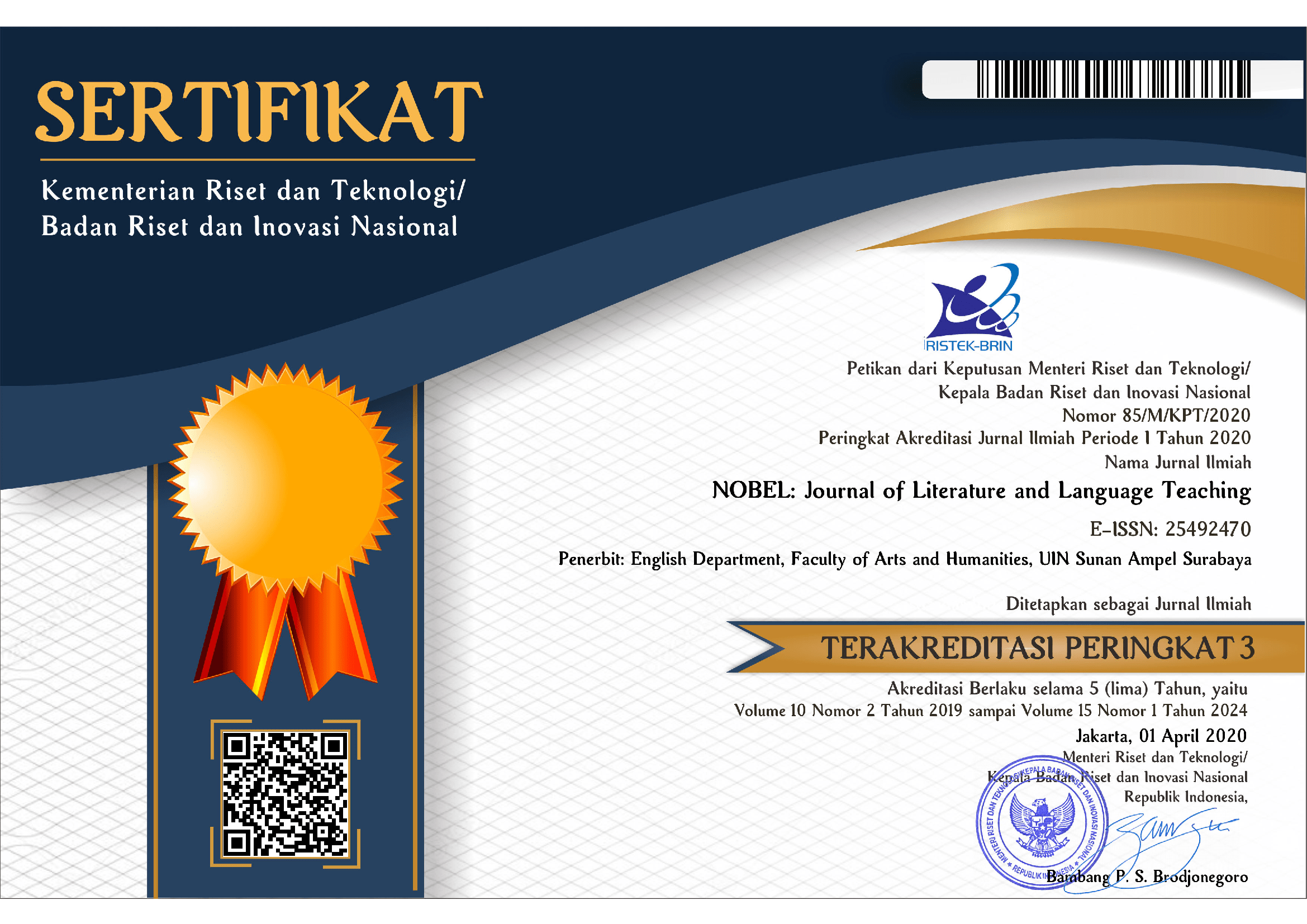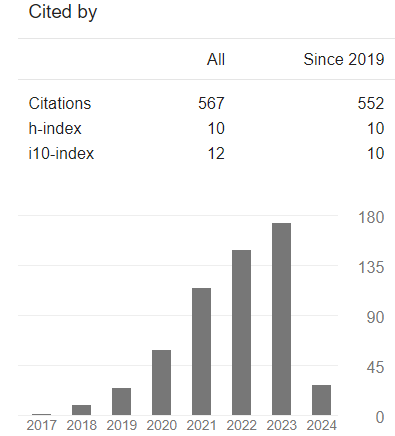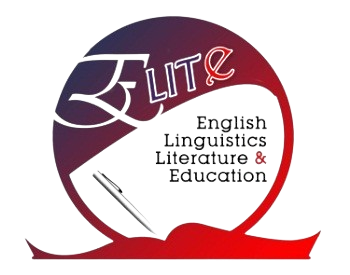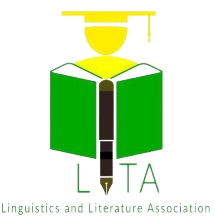Structure and Written Expressions of the TOEFL: Linguistic and Non-Linguistic Constraints
DOI:
https://doi.org/10.15642/NOBEL.2021.12.1.70-90Abstract
This study aimed at investigating the students’ linguistic and non-linguistic constraints in doing the Structure and Written Expression section of the TOEFL. This was a qualitative study in the form of a case study and was carried out in two universities in Magelang, Central Java, Indonesia. The data comprised document analysis on 42 students’ answer sheets on TOEFL and interviews with four students. The data were analyzed using the difficulty index (IF) formula proposed by Brown (2004) and the interactive model developed by Miles and Huberman (1994) for quantitative and qualitative data, respectively. The findings revealed that the students encountered three linguistic constraints in terms of grammatical items as caused by both intralingual and interlingual interference: active-passive verbs, double comparatives, and pronoun-noun agreement. Besides, non-linguistic factors such as unpleasant past learning experiences and limited exposure to the L2 worsened their performance on the test.
Downloads
References
Afshar, M. R., Gorjian, B., Veysi, E., Sharafi, S., & Shekaramiz, M. (2020). The candidates’ inferring problems of TOEFL listening module. Research Language of Journal S, 12(37), 267–295. DOI: 10.22051/jlr.2020.27525.1762
Ahmed, S. (2015). Attitudes towards English language learning among EFL learners at UMSKAL. Journal of Education and Practice, 6(18), 6–16. https://files.eric.ed.gov/fulltext/EJ1079681.pdf
Akmal, S., Rasyid, M. N. A., Masna, Y., & Soraya, C. N. (2020). EFL learners’ difficulties in the structure and written expression section of TOEFL test in an Indonesian university. Englisia: Journal of Language, Education, and Humanities, 7(2), 156–180. DOI: 10.22373/ej.v7i2.6472
Astuti, S. P. (2013). Teachers’ and students’ perceptions of motivational teaching strategies in an Indonesian high school context. TEFLIN Journal: A Publication on the Teaching and Learning of English, 24(1), 14–31. DOI: 10.15639/teflinjournal.v24i1/14-31
Barnes, M. (2017). Washback: Exploring what constitutes “good” teaching practices. Journal of English for Academic Purposes, 30(November), 1-12. DOI: 10.1016/j.jeap.2017.10.003
Brown, H. D. (2004). Language assessment: Principles and classroom practices. South Korea: Longman.
Brown, H. D. (2007). Principles of language learning and teaching. (5th Ed.). New York, Pearson Education, Inc.
Brown, J. D. (2005). Testing in language programs: A comprehensive guide to English language assessment. New Jersey: Prentice-Hall Regents.
Burkett, T. (2018). TOEFL (Test of English as a Foreign Language). In The TESOL Encyclopedia of English Language Teaching. DOI: 10.1002/9781118784235.eelt0358
Cho, Y., & Blood, I. A. (2020). An analysis of TOEFL ® Primary TM repeaters: How much score change occurs? Language Testing, 37(4), 503–522. DOI: 10.1177/0265532220927751
Cohen, L., Manion, L., & Morrison, K. (2007). Research methods in education. Routledge.
Creswell, J. W., & Creswell, J. D. (2018). Research design: Qualitative, quantitative, and mixed methods approaches. Los Angeles: SAGE Publications, Inc.
Djonhar, S. C. (2014). Fundamental principle of learning English. International Conference on Fundamentals and Implementation of Education (ICFIE) 2014. http://pps.uny.ac.id
El-Dakhs, D. A. S., Al-Khodair, M., Alwazzan, R., & Altarriba, J. (2020). Does the morphological structure of L1 equivalents influence the processing of L2 words? Evidence from Arabic-English bilinguals. PSYCHOLINGUISTICS, 27(2), 11–43. DOI: 10.31470/2309-1797-2020-27-2-11-43
Fauziati, E. F. (2017). Native and target language influence on the students’ interlanguage production: A case of Indonesian EFL compositions. Indonesian Journal of Applied Linguistics, 7(1), 54. DOI: 10.17509/ijal.v7i1.6858
Fitzgerald, C. E., Rispoli, M., & Hadley, P. A. (2017). Case marking uniformity in developmental pronoun errors. First Language, 37(4), 391–409. DOI: 10.1177/0142723717698007
Gamon, M., Chodorow, M., Leacock, C., & Tetreault, J. (2013). Grammatical error detection in automatic essay scoring and feedback. In M.D. Shermis & J. Burstein (Eds.). Handbook of automated essay evaluation: Current applications and new directions, (pp. 251-266). New York: Routledge.
Ginther, A., & Yan, X. (2018). Interpreting the relationships between TOEFL iBT scores and GPA: Language proficiency, policy, and profiles. Language Testing, 35(2), 271–295. DOI: 10.1177/0265532217704010
Hale, G. A., Stansfield, C. W., Rock, D. A., Hicks, M. M., Butler, F. A., & Oller, J. W. (1988). Multiple-choice cloze items and the test of English as a foreign language. ETS Research Report Series. DOI: 10.1002/j.2330-8516.1988.tb00258.x
Halim, N., & Ardiningtyas, S. Y. (2018). Difficulties faced by the students in answering TOEFL test questions. ETERNAL (English, Teaching, Learning, and Research Journal), 4(2), 219. DOI: 10.24252/Eternal.V42.2018.A7
Harmer, J. (2010). The practice of English language teaching: With DVD. London: Pearson/Longman.
Iqbal, M., & Zurriyati, Z. (2020). Students’ perception of the TOEFL test as thesis examination requirement. Journal of English Teaching, Linguistics, and Literature, 1(1), 90–99. https://ejurnal.iainlhokseumawe.ac.id/index.php/jetlee/article/view/980
Kaçani, L. (2014). Grammatical mistakes of Albanian students in learning English as a foreign language. Mediterranean Journal of Social Sciences, 5(19), 323-329. DOI: 10.5901/mjss.2014.v5n19p323
Karjo, C. H., & Ronaldo, D. (2019). The validity of TOEFL as entry and exit college requirements: Students’ perception. 326–330. DOI: 10.2991/conaplin-18.2019.277
Khodadad, M., & Kaur, J. (2016). Causal relationships between integrative motivation, self-efficacy, strategy use and English language achievement. 3L: Language, Linguistics, Literature®, 22(3), 111-125. DOI: http://doi.org/10.17576/3L-2016-2203-08
Lakshmanan, U. (2013). Child second language acquisition. In P.J. Robinson (Ed.). The Routledge encyclopedia of second language acquisition, (pp. 71-75). New York: Routledge.
Lin, C. Y., & Chuang, S. Y. (2014). Taiwanese EFL learners’ English relative clauses learning. International Journal of English Linguistics, 4(4), 99-106. DOI: 10.5539/ijel.v4n4p99
Loh, C. Y. R., & Teo, T. C. (2017). Understanding Asian students learning styles, cultural influence and learning strategies. Journal of Education, 7(1), 194-210. http://www.jespnet.com/journals/Vol_4_No_1_March_2017/23.pdf
Mckinley, J., & Thompson, G. (2018). Washback effect in teaching English as an international language. In J. I. Liontas, M. DelliCarpini, & S. Abrar-ul-Hassan (Eds.), TESOL Encyclopedia of English Language Teaching (1st ed.). Wiley. DOI: 10.1002/9781118784235
Muliawati, I., Mutia Ismail, N., Lismalinda, & Rizka, B. (2020). Test-taking anxiety among EFL university students in TOEFL test: a case study from Indonesian context. Humanities & Social Sciences Reviews, 8(3), 200–208. DOI: 10.18510/hssr.2020.8321
Nasution, F. S. (2019). Structure and written expression error analysis on TOEFL test students of English department Padangsidimpuan state institute for Islamic studies [Skripsi, IAIN Padangsidimpuan]. http://etd.iain-padangsidimpuan.ac.id/2719/
Nazri, M. A., Wijaya, H., & Zainurrahman. (2020). EFL students’ ability in answering TOEFL reading comprehension section. Journal of Physics: Conference Series, 1539(2020), 1-5. DOI: 10.1088/1742-6596/1539/1/012044
Nzerem, J.-K. K., & Bob, P. O. (2019). The role and significance of error linguistics in a second language environment. ANSU Journal of Language and Literary Studies, 1(5), 1–9. https://ezenwaohaetorc.org/journals/index.php/AJLLS/article/view/829
Pica, T. (2013). Naturalistic and instructed language learning. In P.J. Robinson (Ed.). The Routledge Encyclopedia of Second Language Acquisition (pp. 455–458). New York: Routledge.
Punch, K. F., & Oancea, A. (2014). Introduction to research methods in education. Los Angeles: SAGE.
Putra, A. (2020). An analysis on English students’ difficulties in TOEFL test of structure and written expression section at IAIN Padangsidimpuan [Undergraduate, IAIN Padangsidimpuan]. http://etd.iain-padangsidimpuan.ac.id/6242/
Romano, F. (2018). The basic continuity hypothesis of L1 to L2 production. Second Language Research, 34(3), 275–308. DOI: 10.1177/0267658317729423
Samad, I. A., Jannah, M., & Fitriani, S. S. (2017). EFL students’ strategies dealing with common difficulties in TOEFL reading comprehension section. International Journal of Language Education, 1(1), 29-36. DOI: 10.26858/ijole.v1i1.2869
Silviyanti, T. M., Ramadhani, R., & Samad, I. A. (2020). EFL students’ strategies in answering the listening section of the Longman TOEFL. Studies in English Language and Education, 7(1), 237–246. DOI: 10.24815/siele.v7i1.13007
Staples, S., Biber, D., & Reppen, R. (2018). Using corpus-based register analysis to explore the authenticity of high-stakes language exams: A register comparison of TOEFL iBT and disciplinary writing tasks. The Modern Language Journal, 102(2), 310–332. DOI: 10.1111/modl.12465
Sudrajat, W. N. A., & Astuti, E. R. (2018). Students’ perceptions of the use of TOEFL preparation online course on the test performance: The case of TOEFL structure and written expression Test. Humaniora, 9(3), 275-282. DOI: 10.21512/humaniora.v9i3.4807
Sulistyo, G. H. (2009). TOEFL in a brief historical overview from PBT to IBT. Bahasa Dan Seni, 37(2), 116-127. http://sastra.um.ac.id/wp-content/uploads/2012/01/1-Gunadi.docx.pdf
Syahrin, A. (2020). Error Analysis in Completing Structure Section of TOEFL Test [Skripsi, UIN AR-RANIRY]. https://repository.ar-raniry.ac.id/id/eprint/13307/
Syakur, A. (2019). Application of E-learning as a method in educational model to increase the TOEFL score in higher education. Journal of Development Research, 3(2), 111–116. DOI:
28926/jdr.v3i2.88
Tang, E., Chung, E., Li, E., & Yeung, S. (2016). Online independent vocabulary learning experience of Hong Kong university students. IAFOR Journal of Education, 4(1). DOI: 10.22492/ije.4.1.01
Tangkelangi, N. I. (2020). Students’ competence in the TOEFL structure and written Expression. IDEAS: Journal on English Language Teaching and Learning, Linguistics and Literature, 8(1), 59-66. DOI: 10.24256/ideas.v8i1.1271
Terzio?lu, Y., & Bensen Bostanci, H. (2020). A comparative study of 10th grade Turkish Cypriot students’ writing errors. SAGE Open, 10(1), 1-19. DOI: 10.1177/2158244020914541
Thaidan, R. (2015). Washback in language testing. Education Journal, 4(1), 5-8. DOI: 10.11648/j.edu.20150401.12
Ullman, M. T. (2013). Declarative/Procedural Model (DP). In P.J. Robinson (Ed.). The Routledge Encyclopedia of Second Language Acquisition (pp. 160–164). New York: Routledge.
Verspoor, M., & Schmidt, N. (2013). Language and the lexicon in SLA. In P.J. Robinson (Ed.). The Routledge Encyclopedia of Second Language Acquisition (pp. 353–359). New York: Routledge.
Wang, R., & Xiang, X. (2016). On the function of mother tongue transfer in English vocabulary acquisition. Theory and Practice in Language Studies, 6(11), 2208. DOI: 10.17507/tpls.0611.19
Watcharapunyawong, S., & Usaha, S. (2013). Thai EFL students’ writing errors in different text types: The interference of the first language. English Language Teaching. DOI: 10.5539/elt.v6n1p67
Yaghoubi, A. (2009). Error competence and structural competence in EFL context. The Journal of Modern Thoughts in Education, 4(4), 91-110. https://jmte.riau.ac.ir/article_900.html?lang=en
Yousuf, A., & Elyyan, Z. O. (2020). An error analysis of Community College of Qatar (CCQ) students’ Arabic and English emails to faculty. DOI: 10.5281/ZENODO.3768569
Yunianti, S. S., Yosintha, R., & Ramadhika, B. (2020). Post-Test Scores: TOEFL Preparation for the Students of Universitas Tidar and STMIK Bina Patria (Scores No. 2; pp. 1–3). Universitas Tidar.
Zalha, F. B., Alfiatunnur, A., & Kamil, C. A. T. (2020). Strategies in dealing with the reading section of ‘TOEFL prediction’: A case of Aceh EFL learners. IJEE (Indonesian Journal of English Education), 7(2), 159-171. DOI: 10.15408/ijee.v7i2.17622
Downloads
Published
How to Cite
Issue
Section
License
Copyright (c) 2021 NOBEL: Journal of Literature and Language Teaching

This work is licensed under a Creative Commons Attribution 4.0 International License.







